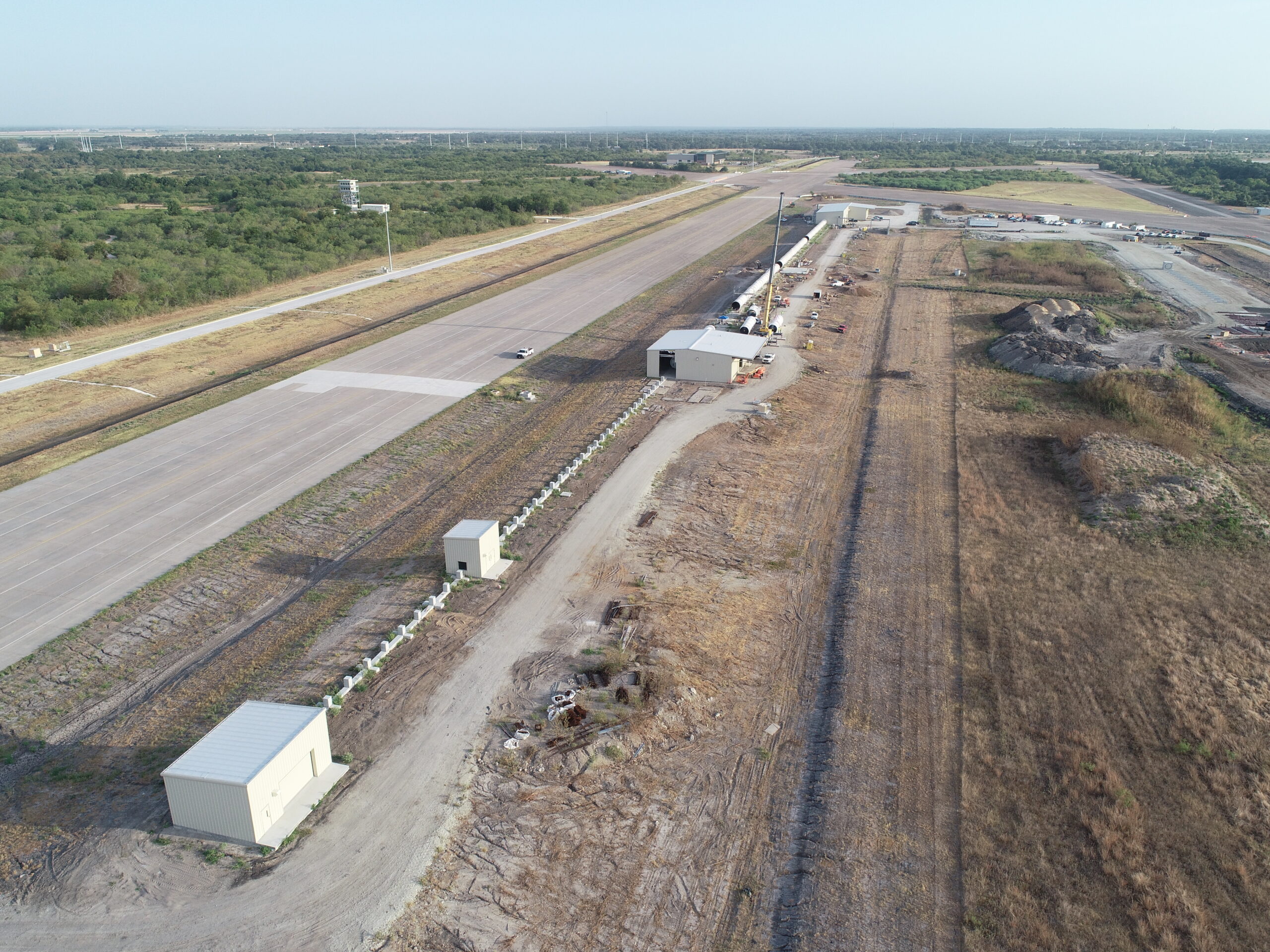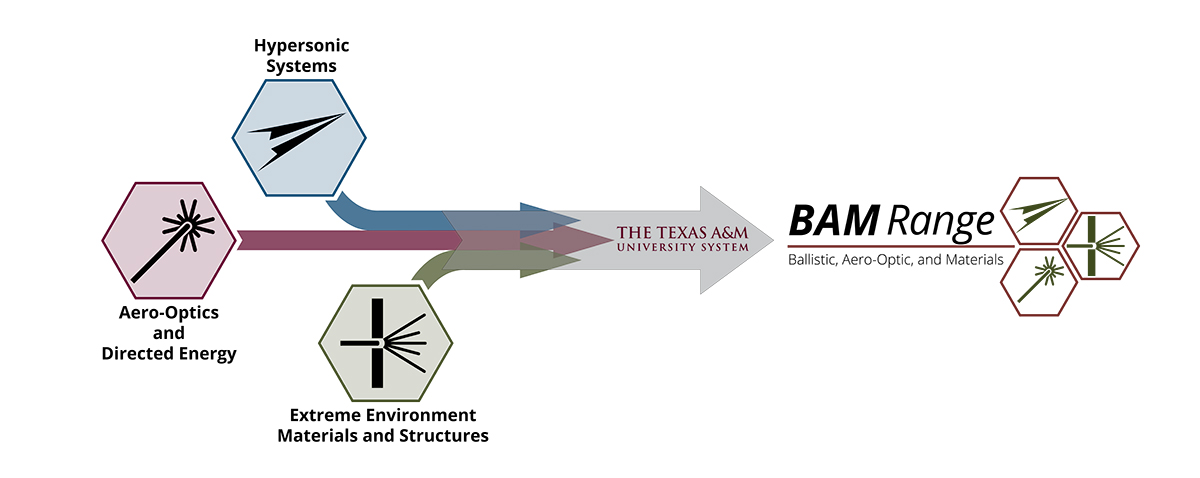
Ballistic, Aero-optics, and Materials Range
Ballistic, Aero-optics, and Materials (BAM) Range at the George H.W. Bush Combat Development Complex will be a large-scale, fully-enclosed multi-disciplinary research and development facility capable of evaluating high energy laser propagation, hypersonic aerothermodynamics, and hypervelocity impact response of materials and structures. This is accomplished within a fully characterized test channel that can achieve controllable atmospheric conditions. Once completed, the BAM Range will be the largest and most fully instrumented facility of its kind in the United States.

There are two central features of the BAM Range that will allow this facility to bridge a gap in U.S. research existing between lab-scale experiments and open-range testing. The first feature includes novel diagnostic equipment and techniques that will enable precise measurements in a well-controlled and well-characterized environment. The second feature is the extended scale – eventually up to a kilometer in length – which will allow for large-scale prototype testing before advancing to more expensive full-scale system testing. As research security is a top priority, the BAM teams have incorporated the appropriate security protocols and measures in the facility’s design and operation.
The BAM Range will help researchers investigate the influence of weather effects, like precipitation, particulates, and air turbulence, on the transmission of high-energy lasers and battlefield communications. It will also enable researchers to characterize the impact of these weather effects on realistic hypersonic vehicle materials and geometries. The hypervelocity impact capability will facilitate the development of new armor and other protective materials systems.
Overall Attributes
- Large-scale (nominally 1-km long, 2.4-m diameter)
- Controllable atmosphere with simulated weather effects
- Equipped with modern instrumentation
- Coupled with cutting-edge modeling and simulation approaches

- Hypervelocity aerothermodynamics
- TPS materials systems
- Communications/plasma effects
- Weather impacts
- Weather effects
- Beam propagation
- Atmospheric characterization
- Beam correction and control
- High-energy systems
- Large-scale defensive structures
- Materials for extreme environments
- High-strain rate responses
- Novel structures and materials systems

Nathan Tichenor
ntichenor@tamu.edu
(979) 845-4938 (Office)
